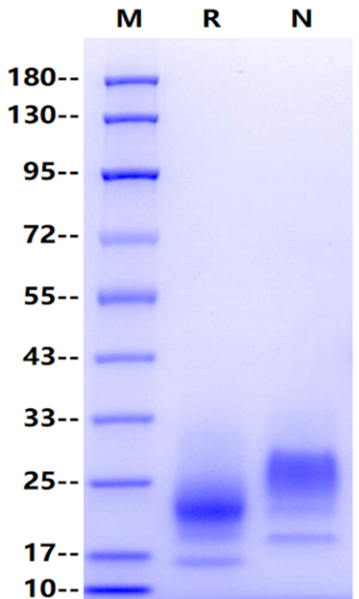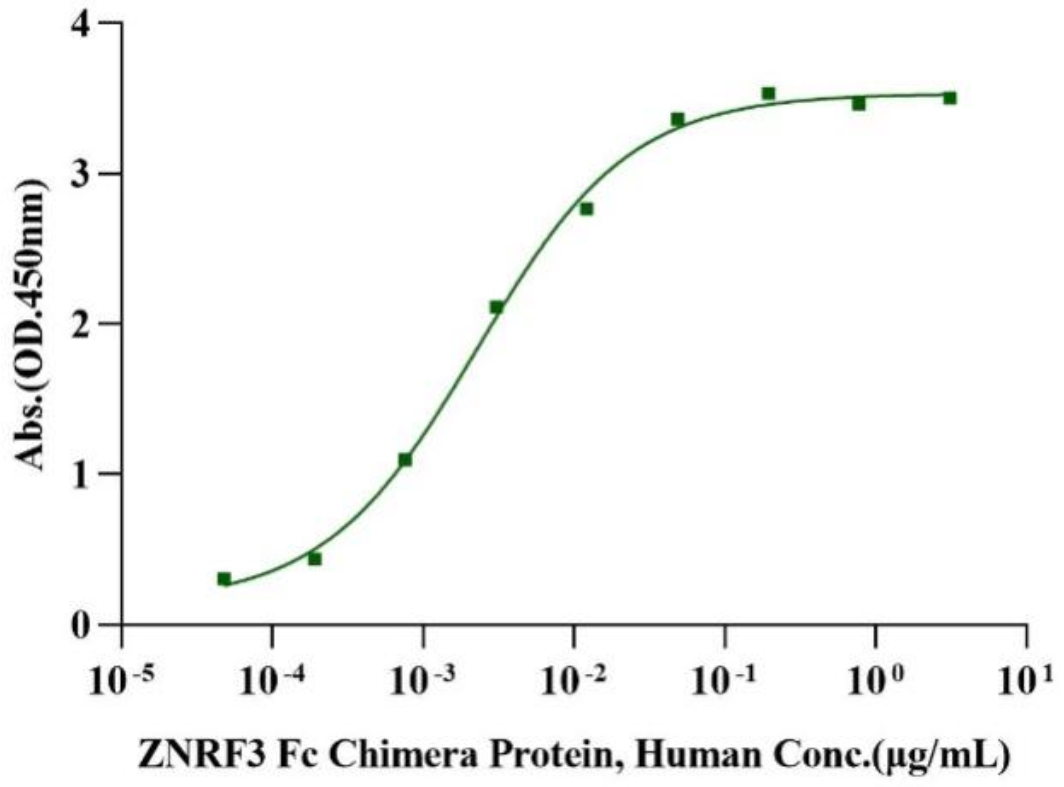Gln22-Val146, with C-terminal 8*His QNASRGRRQRRMHPNVSQGCQGGCATCSDYNGCLSCKPRLFFALERIGMKQIGVCLSSCPSGYYGTRYPDINKCTKCKADCDTCFNKNFCTKCKSGFYLHLGKCLDNCPEGLEANNHTMECVSIVGGGSHHHHHHHH
16 and 20-24kDa (Reducing)
>95% by SDS-PAGE
PBS, pH7.4
Reconstitute at 0.1-1 mg/ml according to the size in ultrapure water after rapid centrifugation.
· 12 months from date of receipt, -20 to -70 °C as supplied.
· 6 months, -20 to -70 °C under sterile conditions after reconstitution.
· 1 week, 2 to 8 °C under sterile conditions after reconstitution.
· Please avoid repeated freeze-thaw cycles.
R-spondin3 (RSPO3), an activator of Wnt/β-catenin signaling, plays a key role in tumorigenesis of various cancers. RSPO3 contains two adjacent cysteine-rich furin-like domains (aa 35-135) with one potential N-glycosylation site (aa 36), followed by a thrombospondin (TSP-1) motif (aa 147-207) and a region rich in basic residues (aa 211-269). RSPO3 is a novel contraction-inducible myokine produced by cultured human myotubes. Human RSPO3 is a paracrine factor that may positively participate in the myogenesis processes of myoblasts and satellite cells. RSPO3 promotes the tumor growth of choriocarcinoma via Akt/PI3K/ERK signaling, which supports RSPO3 as an oncogenic driver promoting the progression of choriocarcinoma. RSPO3 plays a role in the regulation of Wnt (wingless-type MMTV integration site family)/beta-catenin and Wnt/planar cell polarity (PCP) signaling pathways, which are involved in development, cell growth and disease pathogenesis. Genome-wide association studies suggest a correlation of this protein with bone mineral density and risk of fracture.

Measured by its ability to induce Topflash reporter activity in HEK293T human embryonic kidney cells.
The EC50 for this effect is less than 20ng/mL in the presence of 5ng/mL Recombinant Human Wnt‑3a.


Immobilized RSPO3 His Tag, Human (Cat. No. UA040025) at 2.0μg/mL (100μL/well) can bind ZNRF3 Fc Chimera Protein, Human (Cat. No. UA011119) with EC50 of 1.59-3.16 ng/mL.